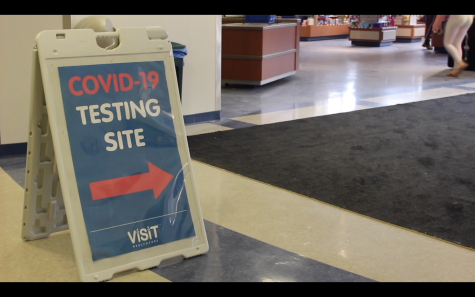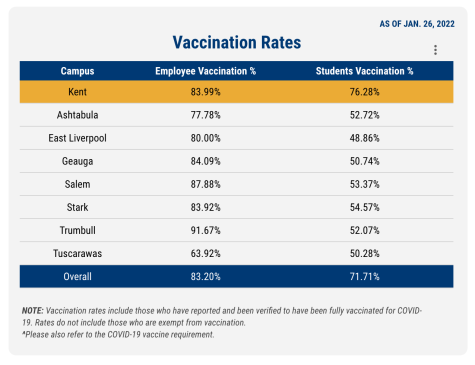School through a screen: Students adjust to remote experience
September 29, 2020
Lacey Neimeier, a freshman architecture major at Kent State University, sits alone in her dorm room in Fletcher Hall.
“I always feel like I’m missing stuff.”
She expresses her concerns with online classes, and she’s not the only one.
According to an Axios article, some “51 percent of college students say it was not the right choice for their schools to allow students on campus.”
At Kent State University, the student population generally seems content with the administration’s decision to reopen campus amidst the COVID-19 pandemic.
“I think that, yes, it was a better decision to come to college,” Neimeier said. “I feel like it’s a better learning experience and it’s just easier to stay motivated.”
However, when it comes to online classes, some students admit that they’re struggling to adjust to the changes.
“I feel like it’s a lot more draining in a sense because you’re just in your room all the time and you’re just sitting around instead of walking to class,” Neimeier said. “I feel like you just don’t get as much learning experience out of it…and I feel like I’m not really learning anything, honestly.”
Resident assistant Zach Zdanowicz, a junior public relations major, is dealing with similar issues adjusting to school through a screen.
“It’s so emotionally and mentally taxing to get on your computer all day and just stare at it,” Zdanowicz said. “It’s really hard to be mentally present when all of your classes are remote, and when the class ends, you’re sitting here like, ‘Do I do homework? What do I do now?’”
The age of social distancing also comes with an added challenge: finding a safe way to socialize.
This is especially true for college freshmen, who seem to be missing out on certain aspects of the “typical” university experience.
“I feel like I would’ve met more people and made more relationships and had a better overall learning experience,” Neimeier said, regarding college life without COVID-19.
Jay Hess, a freshman digital media production major, explains the adversities of being a new college student during a pandemic.
“I just miss meeting people, or like, having study buddies because I don’t personally know a lot of people in my classes,” Hess said.
Hess has been able to make close friends in her building, Olson Hall, but she also longs for “broader aspects” of the college experience as a whole like meeting new people in classes and going to campus events.
On August 31, Kent State announced the executive decision that events of 10 or more people must be held virtually, with the exception of in-person classes.
“You’re not only losing social interactions right now, but you’re also not really gaining as much from your classes, which I think is kind of upsetting,” Zdanowicz said. “It’s really kind of just a game to get things done right now.”
The changes in academia and social life are not the only issues Kent State has faced.
Portage County has recently been shifting between Level 2 Orange and Level 3 Red in terms of COVID-19 cases, with Level 4 Purple being the most severe.
Zdanowicz accredits Kent State President Todd Diacon and his COVID Response Team for the limited number of cases on campus.
“I think they’re doing the best they can with what they’re given and I think they’re being very proactive,” he said. “It’s impossible to have an entire campus of people come back and not have cases.”
At the university, the phrase “Flashes Safe Seven” has become commonplace among students and staff alike.
The first of these seven guidelines, developed to encourage preventative practices in regard to COVID-19, as provided by Kent State’s official website, is to “Always Wear Your Face Covering.”
“I really look at wearing a mask in public as a sign of love and a sign of community,” Zdanowicz said. “That’s you looking out for other people and doing your part if nothing else.”
Despite the distress caused by online classes, students generally seem to respect President Diacon’s decision to allow Kent State’s fall return, as the university continues coping with changes one day at a time.
“They’re (Kent State) really out here to try and make sure that we’re getting the best of our college experience for what we can at the moment,” Zdanowicz said, “and that we can view Kent State as a safe and healthy place for all involved.”
Morgan McGrath is a feature writer. Contact her at [email protected].
SUPPORT STUDENT MEDIA
Hi, I’m Lauren Sasala, a senior journalism student from Toledo. I’m also the editor in chief of The Kent Stater and KentWired this semester. My staff and I are committed to bringing you the most important news about Kent State and the Kent community. We are full-time students and hard-working journalists. While we get support from the student media fee and earned revenue such as advertising, both of those continue to decline. Your generous gift of any amount will help enhance our student experience as we grow into working professionals. Please go here to donate.



















